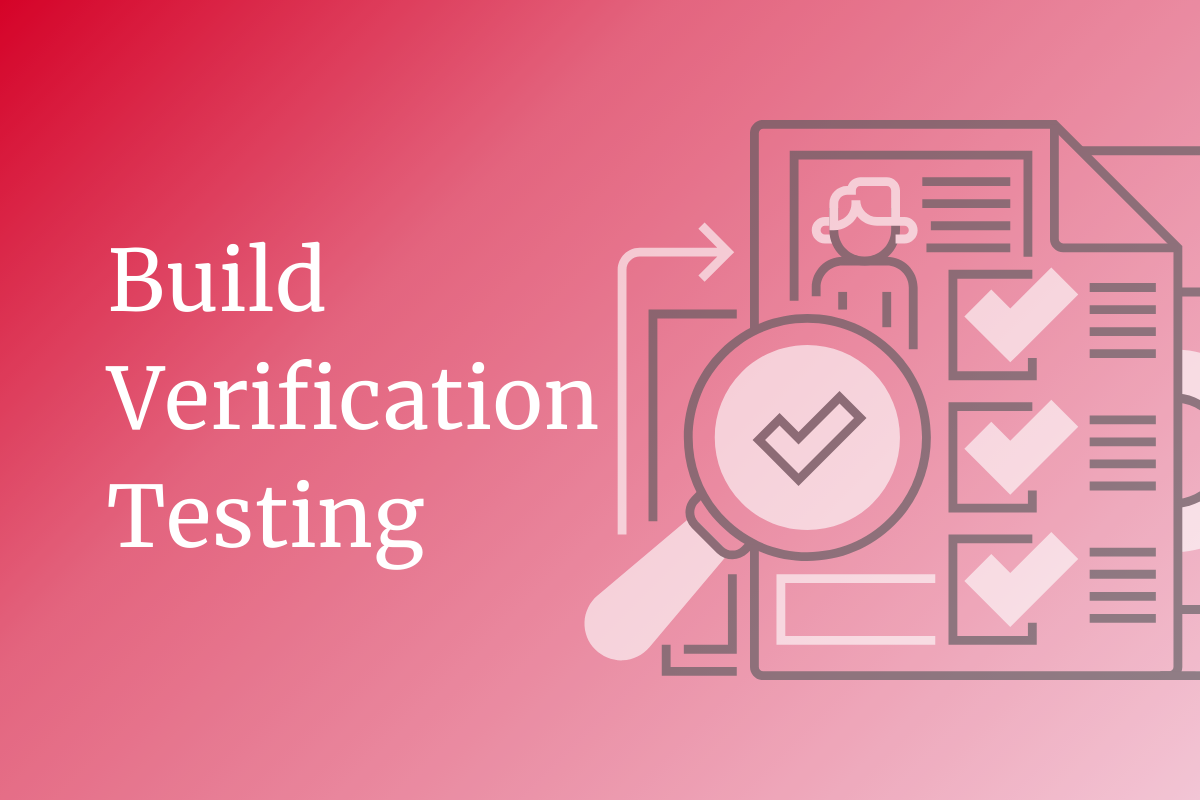The first line of CI/CD pipeline software testing defense has to be Build Verification Testing (BVT). The testing approach takes the first scan to verify the integrity of the new build and whether or not it is qualified to progress further. What is this strategic “first layer” of testing? In today’s blog, we’ll give everything away on the BVT topic, its principles, and the testing process to understand why the first line of defence is such a fundamental step in the CI/CD pipeline.
What Is Build Verification Testing?
Build verification testing, or build acceptance testing, is a software testing approach conducted after every new build is completed to determine whether or not the product is stable for testing.
This process involves executing test cases designed to validate all the fundamental features. As soon as a build fails its BVT, it is rejected immediately and sent back to the developers’ team for resolution. Once the issues are addressed, the build undergoes regression testing with the same test cases.
The initial BVT objective is to streamline the development and testing processes, saving time and resources by minimizing the back-and-forth interactions between these phases. BVT is especially beneficial when dealing with multiple interdependent builds. It is also known as smoke testing and primarily focuses on build verification and acceptance.
For example, a typical BVT for a registration form would confirm proper page rendering and filled-in credential fields that satisfied all pre-defined requirements. Failing in either would result in an incomplete build that the developers would need to debug and resolve further.
Key Principles of BVT
- Early Testing: BVT should be conducted earlier in the development cycle. This aims to identify and rectify issues and bugs before they evolve into complex and costly problems.
- Critical Functionality: The BVT process requires passing all essential functionality tests on the system or software component. These critical elements play a heavy-duty role in the software’s overall performance and the user experience of the build.
- Test End-to-End Scenarios: Verify the seamless interaction between different components within the system from start to finish (from one end to another). This helps eliminate interruptions in the customer experience.
- Clear and Measurable Criteria: BVT follows such clear and measurable metrics to determine the precise pass or fail conditions for each test case outcome.
- Reproducibility: They can be executed multiple times and consistently yield the same outputs.
- Documentation: Structure, detailed and organized documentation of test plans, test cases, and test results in BVT helps keep a track record of the testing process that serves as a reference for future testing, retrace, and maintenance efforts within the testing team.
- Automation: Everything automated equals faster and more consistent. Without human intervention, it means fewer manual errors and reliable results. Automated BVT helps streamline the testing process, enhances efficiency, and allows repetitive test execution. This, in turn, provides faster feedback regarding the system’s behavior and performance, contributing to the overall effectiveness of BVT.
The BVT Testing Process
The process of Build Verification Testing (BVT) is relatively straightforward. Here’s a breakdown of the steps involved:
- Choosing the Appropriate BVT Tests: Determine the relevant BVT tests from the predefined test cases. These tests should focus on the critical aspects of the software build.
- Integration with CI/CD Pipeline: Incorporate the chosen BVT test cases into your Continuous Integration/Continuous Deployment (CI/CD) pipeline. This integration ensures that BVT is seamlessly executed in the automated development and deployment process.
- Execute the Tests: When the build is ready, the BVT tests are executed automatically to assess whether the build is performing according to the expected behavior.
- Analyze and Report Results: After each BVT run, thoroughly analyze the test results. Report the outcomes, indicating whether the build has passed or failed the verification tests.
- Failure Handling: If a BVT test fails, it is crucial to send the failed build back to the developer for resolution. Log the test results and formally reject the build.
- Developer Resolution: The development team addresses the issues based on the report and feedback provided for the failed BVT. Once resolved, they produce a new build.
- Re-Run BVT: The new build undergoes another round of BVT using the same set of tests initially identifying the issues. This verifies that the problems have been resolved and that the build meets the expected criteria.
- Pass or Reject: If the build successfully passes the BVT without issues, it can proceed to further and more comprehensive testing phases. If any problems persist, the build is again rejected and sent back for additional resolution.
It’s important to note that while these steps provide a general guideline for BVT, the actual implementation may vary depending on the project’s specific requirements, complexity, and context. The main goal is to integrate BVT seamlessly into the development workflow to maintain software quality assurance and streamline the testing process.
Conclusion
In short, BVT is the initial testing phase conducted on each new software build before proceeding to an extensive testing process. With BVT, the latest build is rigorously assessed for its fundamental features, checking its stability and readiness status, aiming to prevent test case failures during subsequent testing phases. It is treated as the first screening for software testing to cut down testing time and avoid wasting unnecessary resources once the build is inefficient.
ContactContact
Stay in touch with Us




